Change can be startling to our memories, but renewal is at the heart of learning and growing. For Denisonians who haven’t been back to campus in the past five years, this view—looking east-ward from the Samson Talbot Hall of Biological Science, across the Reese~Shackleford Common and over the Burton D. Morgan Center toward Swasey Chapel—will represent a distinct change. The scene above notes change and meshing of traditions as well. For nearly a decade, Denison has launched the academic year with the First-Year Student Induction Convocation, when the newest Denisonians are welcomed into the life and work of the college by faculty in full academic regalia, the ringing of the 1855 College Bell, and an original fanfare composed for the class by a music faculty member. This will be played again at their commencement four years hence, when the class departs this hilltop, transformed, steeped in tradition and discovery, and woven together with the common threads of their living and learning experience.
The Campaign for Denison Exceeds High Expectations
Six years ago, Denison University challenged itself to look beyond its secure position among the best of the nation’s liberal arts colleges. With a bold plan to strengthen every aspect of the campus and community and an ambitious goal of raising $160 million, the college launched Higher Ground: The Campaign for Denison. When the campaign concluded on June 30, 2008, the goal had been met—and then some. Totaling more than $177 million, Higher Ground’s achievements will forever enhance the life of the college.
Already, those changes are being felt on campus. Sixteen new endowed professorships give Denison a 10-to-1 student-faculty ratio, and enable even more individualized attention to each student in the classroom, studio, and lab. Increased funding for professional development helps Denison recruit outstanding faculty candidates and helps the faculty stay on top of their own research and scholarship, creating a shared atmosphere of learning and ensuring the latest, sharpest tools for teaching.
Students also are reaping the direct and immediate benefits of Higher Ground. More than $20 million was given to endow scholarships and financial aid, enabling Denison to offer an additional $1 million in need- and merit-based aid each year. Millions more went toward stipends for internships and independent research. In particular, support of the Summer Scholars program more than doubled, now funding nearly all 125 research and creative opportunities. Meanwhile, gifts to the Annual Fund throughout Higher Ground eased Denison’s operating burdens, which in turn helped the college aggressively support student and faculty activity.
Nearly a quarter of Higher Ground gifts were invested in new and existing facilities for living and learning, including Samson Talbot Hall of Biological Science, the innovative and multi-purpose Burton D. Morgan Center, The Reese-Shackelford Common (which sits atop an underground parking garage for 400 vehicles), the Bryant Family Arts Center at Cleveland Hall, four new apartment-style residence halls for seniors, the Mulberry Fine Arts MIX Lab, and the renovation of Denison Museum and Higley Hall (formerly Life Sciences)—all on a fully wireless campus equipped with strong technological resources.
These successes increase momentum, as investments in Denison’s core endowment and ongoing support of the Annual Fund provide vital resources today and for generations to come, securing Denison’s “higher ground” position on the landscape of liberal arts education.
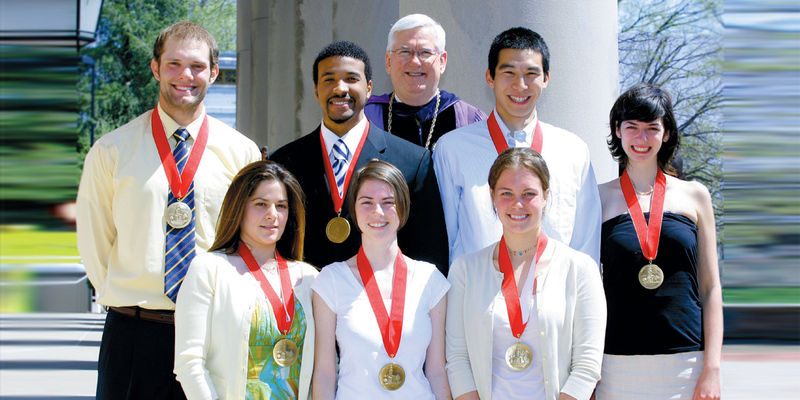
A Place of Their Own
2008 President’s Medalists
On a campus where hard work and accomplishment are as ubiquitous as red bricks and mortar, awarding a medal for excellence might seem superfluous. But as in any human enterprise, a small handful always rises to the top. Each spring for the past 23 years, the Denison University President’s Medal has been bestowed upon those few who brought an extra measure to their college work and life, and so to their community. Chosen for reasons as varied as their temperaments, they share a common fondness and appreciation for this place. Here each of them describes a setting of particular significance, which helped define who they grew to be during their four years at Denison.
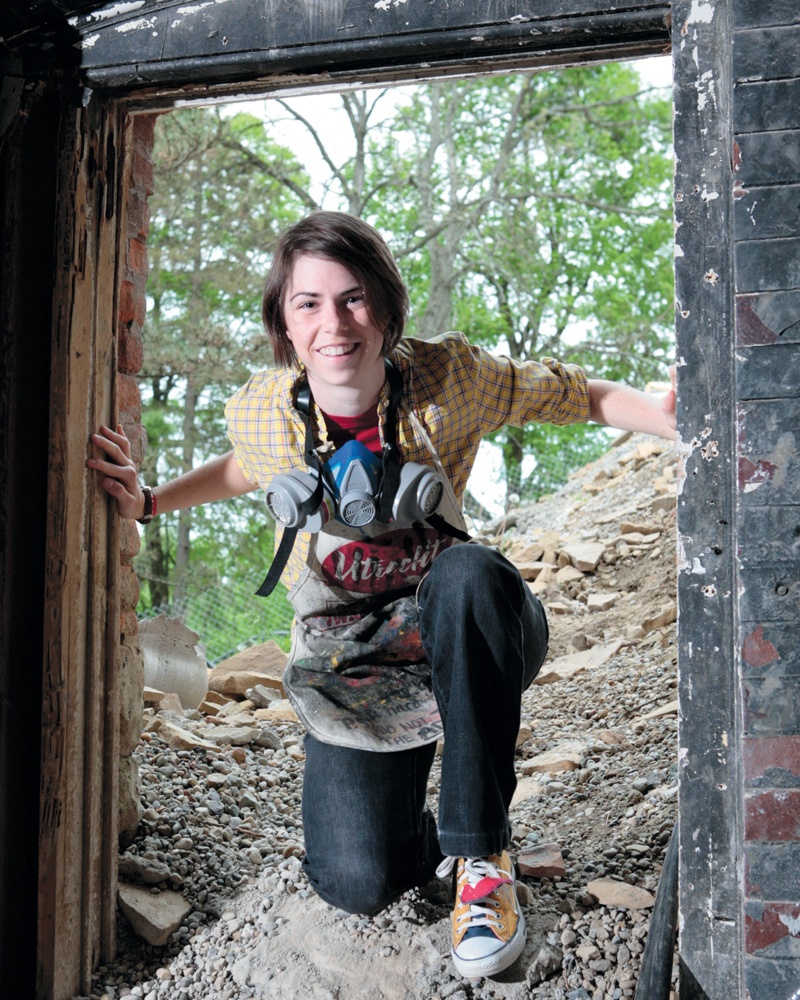
Madeline Elizabeth Mohre
B. F. A. Studio Art; Dewitt, Mich.
• Honors Program Scholar
• Honors Program Scholar
• Young Scholar, Summer Scholars Program
• Teaching Assistant, Department of Art
• Violinist, Denison Symphony Orchestra
• Student Staff Leader, DEUCE Orientation
• Homestead Resident
• M.F.A. Candidate, Washington University
I chose Cleveland Hall for my picture because it was one of the most memorable first impressions of campus I had. It was one of those spaces that always revealed something new — a sort of labyrinth that, if I walked around a bit, I discovered different modes of thinking and operating. And you could modify the space, with both collaborative thought and actual physical projects (like wallpapering the men’s restroom with geometric patterns designed by one class). That’s what was so remarkable about the building! Having been converted from a gymnasium to the art center, it always seemed like a building that was happy to accommodate change. And now it is in the middle of another renovation. Of course, every space needs an entry point, but because I work late at night, I wanted mine to be accessible after hours. So I always made sure to leave the window latch open at the end of the day. I miss getting on my knees to pry up the old, weighted, flaking window and scrambling in before anyone saw. I loved jumping down into the warm printroom, where I’d feel right at home. That routine of entering, and the happiness I felt once I was inside is what I think of also for my time spent at Denison. It’s hard to leave, but just like Cleveland Hall, I have to remember that change is another opportunity for discovery and adventure.
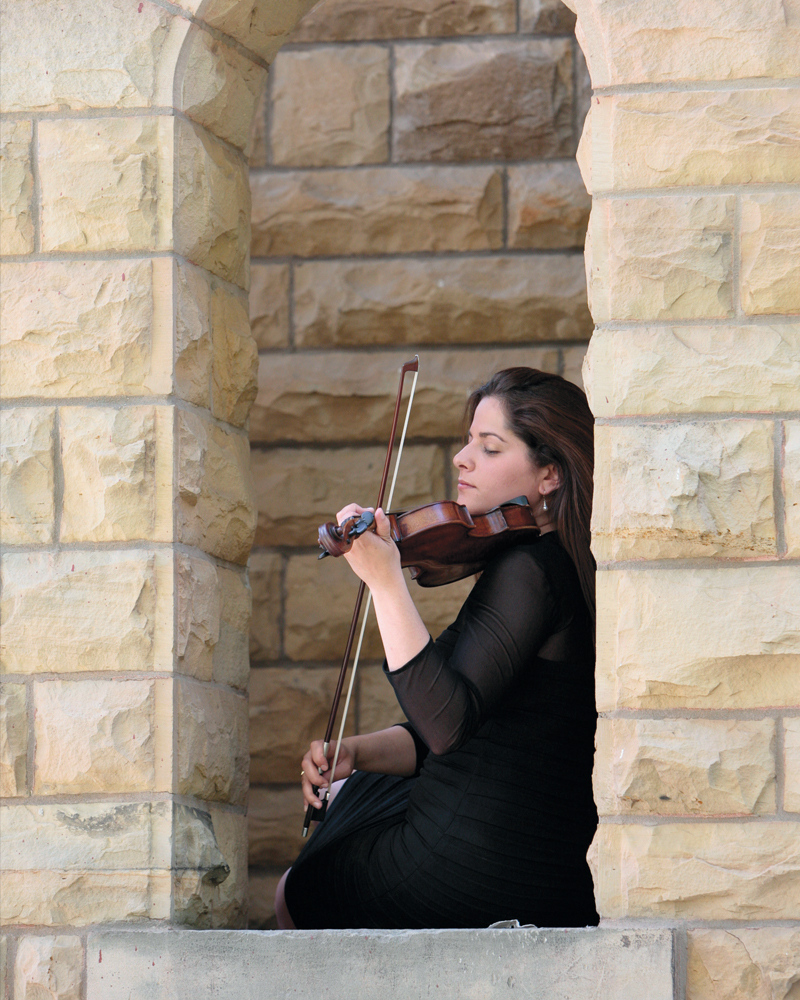
Alexandra Elizabeth Wilson
B. A. History & Music; North Hampton, N.H.
• Phi Beta Kappa
• Fellow, Department of History
• Co-Founder & Moderator, Sustained Dialogue
• Founder, New Music Society
• Young Scholar, Summer Scholars Program
• Stage Manager, Department of Music
• Honors Program Scholar
• MBA Candidate, Ohio State University
Being asked to pick a favorite place for my President’s Medal photo was an easy assignment. Burton Hall was a natural choice for me because I spent a great deal of my college life practicing and rehearsing in the building and also built lifelong friendships with my classmates and faculty there. And in terms of aesthetics, it provided a physical space for ‘artsy’ photography, which seemed fitting since I was being shown with my violin. Having left Denison just six short months ago, I think some of the most important things I gained from my years there were critical thinking skills, the desire to jump at interdisciplinary opportunities, and a lifelong desire to learn.
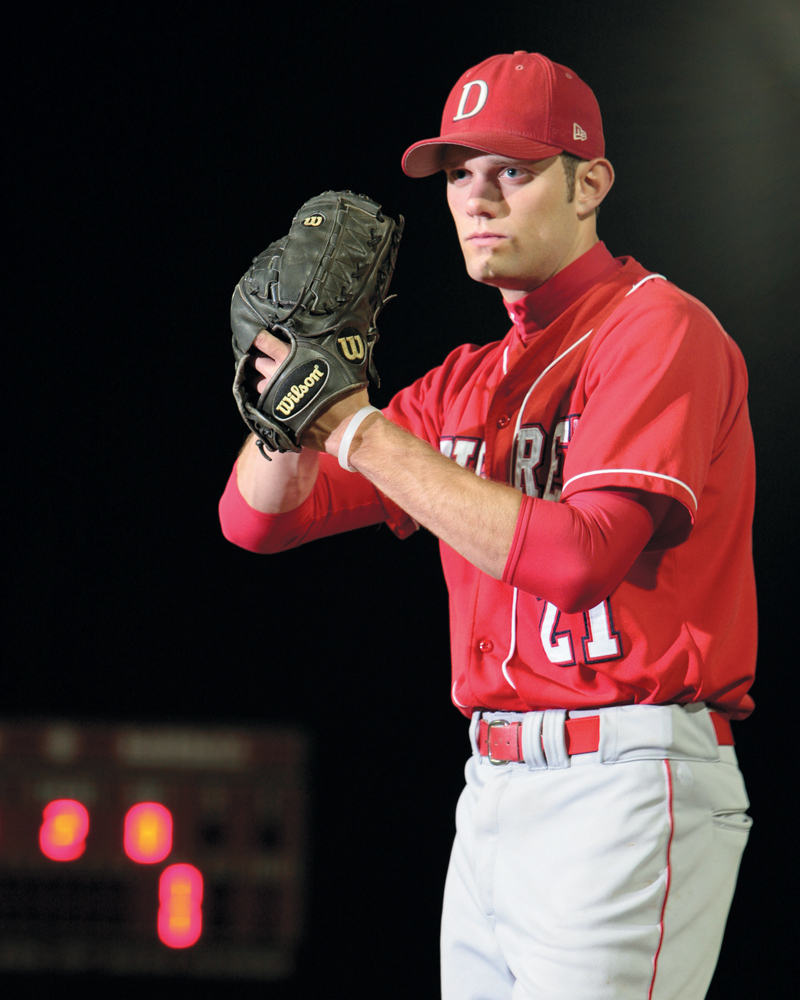
James Paul Clear
B.S. Biomechanics, Hamilton, Ohio
• Young Scholar, Summer Scholars Program
• Team Captain, Most Valuable Pitcher, Baseball
• ESPN The Magazine Standout Athlete
• Honors Program Scholar
• Commencement Speaker
• Senior Interviewer, Admissions
• Vice President, Student Athletic Advisory Committee
• M.B.A. Candidate, Ohio State University
The Pitcher’s mound seemed to be a particularly representative place for me to have a final Denison photo taken. At college, I tried to make my experience as a student-athlete as balanced and complete as possible. Consequently, the lessons I learned were just as deep and profound on the field as they were in the classroom. It was here where I learned that luck favors hard work, that leadership is meaningless without integrity, and that team accomplishment is far greater than individual achievement. Thus, the time I spent on this mound, and the work that came before, is representative of my total development as a person. The lessons in leadership that came on the field were accompanied by lessons of logic in the classroom. Ultimately, Denison’s most important message for me came from both areas: life is about the people around you, about the teammates who support you, about the professors who challenge you, and about the university that believes in you. I was blessed to attend an institution filled with such people, and I will always be grateful to Denison for shaping me into the person I am today.
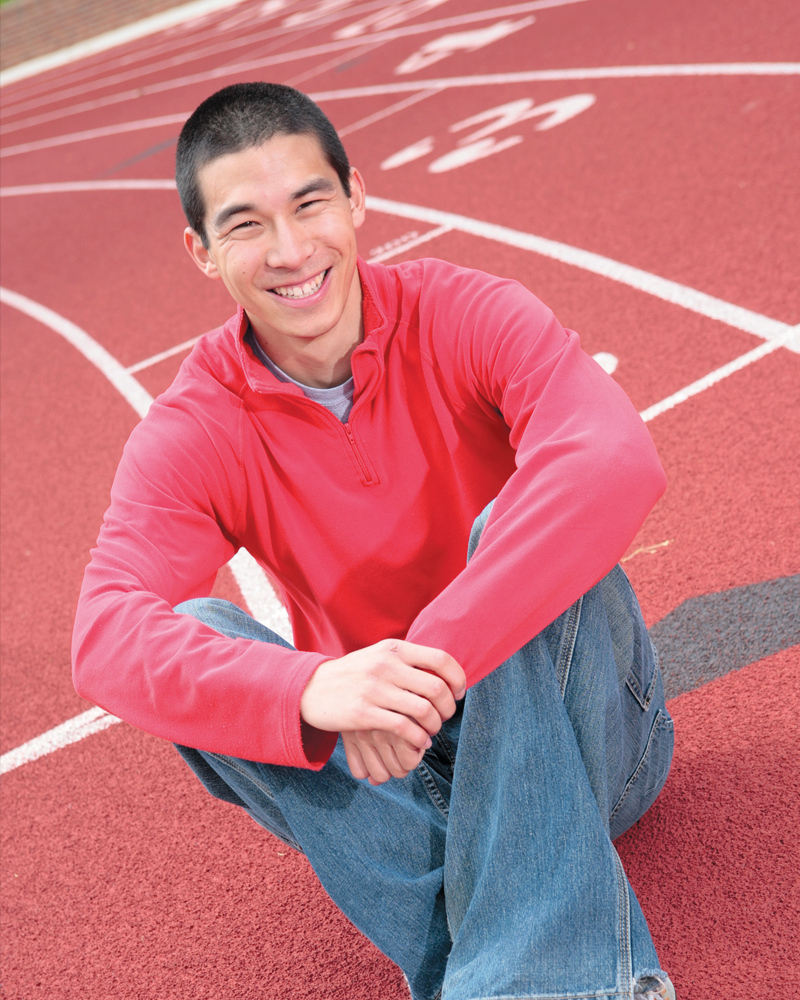
Erik Peter Teh Walker
B. A. Political Science & German; The Woodlands, Texas
• Fellow, Department of Political Science
• Fellow, Department of Modern Languages
• Three-time All-NCAC, Indoor and Outdoor Track and Field
• Scholar of the Year & Secretary, Delta Chi Fraternity
• Summer Intern for Senator Richard G. Lugar ’54
• Vice President for Public Relations, Denison Community Association
• Secretary, Mortar Board
• Congress Bundestag Youth Exchange Scholar, Germany
I chose the track because it influenced my academics and athletics, as well as my social and spiritual life at Denison. The place itself reminds me of all the memories I have, not just as a member of the team, but also of the people I knew, the friends I had, and the other activities that I had to organize around it. Track and field was a constant, helping me to focus and organize in other areas, while also giving me an outlet to vent. Additionally, I met my fiancee, Jessica Holder ’06, on the track team, so that’s a very special and personal connection. My teammates and coaches were a family away from home and I’ll never forget them. Finally, I was happy that my parents and relatives were able to come watch my home meets at Denison. It’s hard to focus on just one thing I learned from my time at Denison. I will say that Denison taught me how to adapt and work in new environments and tackle new challenges, lessons that have proven invaluable in Germany.
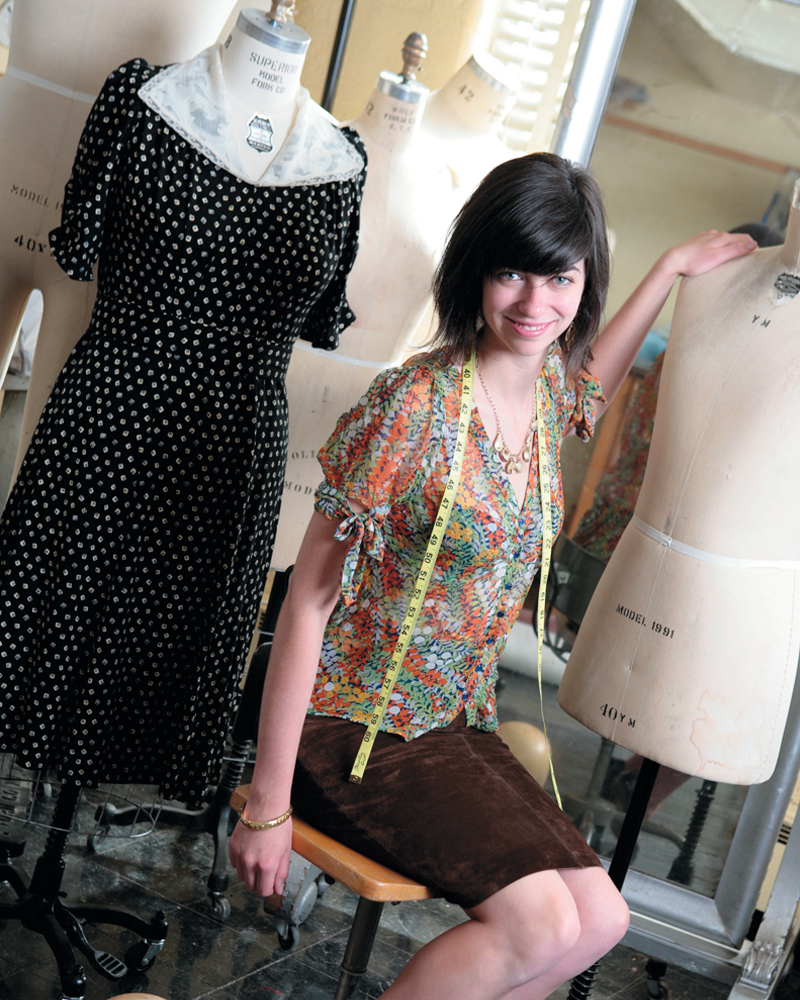
Jessie Elizabeth Kanelos
B. A. Theatre; Chicago
• Posse Foundation Scholar, Chicago
• Honors Program Scholar
• Co-Manager & Fundraising Coordinator, WDUB Radio
• Student Advisor, June Orientation
• Costume Designer & Wardrobe Supervisor, Department of Theatre
• Public Relations Chair, La Fuerza Latina
• Dining & Personnel Committees, Denison Community Government Association
Many people are not even aware that the costume shop exists, but I wanted my photo taken where I spent almost every afternoon. It’s a vibrant place of continual creativity, collaboration, and friendship among students, professors, and visiting theatre designers. I came as a theatre performance and studio art double major and started working in the shop the first week of my freshman year. After working on wardrobe for several productions and finding I did not enjoy the grueling audition process, I realized that costume design offered me the hands-on creativity of my studio art major while still working collaboratively in the theatre.
For my senior research project, I designed the costumes for Eugéne Ionesco’s absurdest play Rhinoceros. The knowledge I had gained through my range of course-work helped me to understand the play’s political and cultural post-World War II commentary and how to use a black and white color scheme to reinforce the play’s theme of conformity. The relationships and leadership experience I gained in Ace Morgan made me a stronger person and student uphill. It gave me the confidence to share my different perspectives while
I was involved with WDUB, Posse, La Fuerza Latina and Women’s Emphasis.
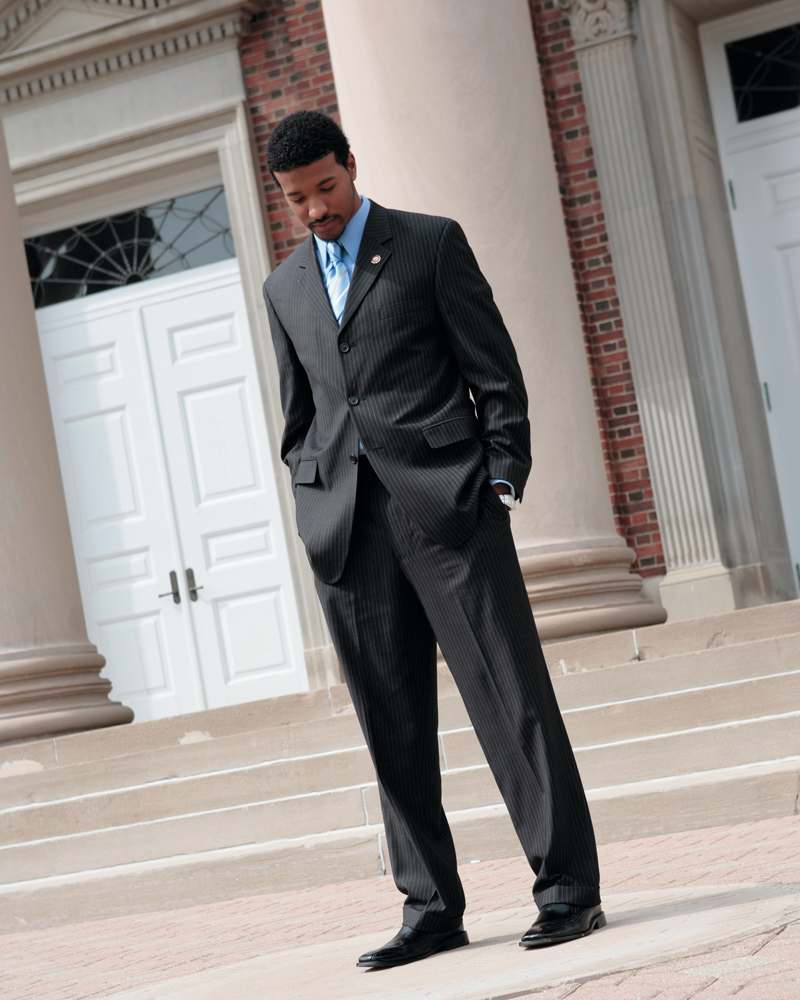
Romero Rayne Huffstead
B. A. Psychology; Skokie, Ill.
• Posse Foundation Scholar, Chicago
• Ronald E. McNair Summer Research Scholar Michigan State University
• Resident Assistant
• Co-Governor, Class of ’08
• President, Black Student Union
• Dr. Martin Luther King Scholar
• Ph.D. Candidate, Psychology, Indiana State University
I remember freshman year, constantly hearing people say, ‘Do not step on the seal, because if you do, you won’t graduate.’ Seeing others avoid the seal as they walked to and from classes reminded me of the obstacles I’ve had to face in my life. When you’re expected to fail, you work harder to overcome the challenges that stand in the way. One night, my freshman year, I determined that I was going to stand on the seal and prove that it was possible to graduate and to succeed despite the symbolism it had. On a broader scale, I was going to prove that despite the challenges and obstacles that this world has to offer, when we are motivated to achieve, we can accomplish anything we set our minds to.
Whenever times were tough for me at Denison, I remembered the seal and the promises I made to myself to do great things and to graduate. It also reminded me of the promises I made to my parents when I was younger that their son was going to be somebody in life and was never going to let them down. Interestingly, while the picture was being taken last May, students were walking by and saying, “You’re not going to graduate,” and all I could do was smile because I knew better!
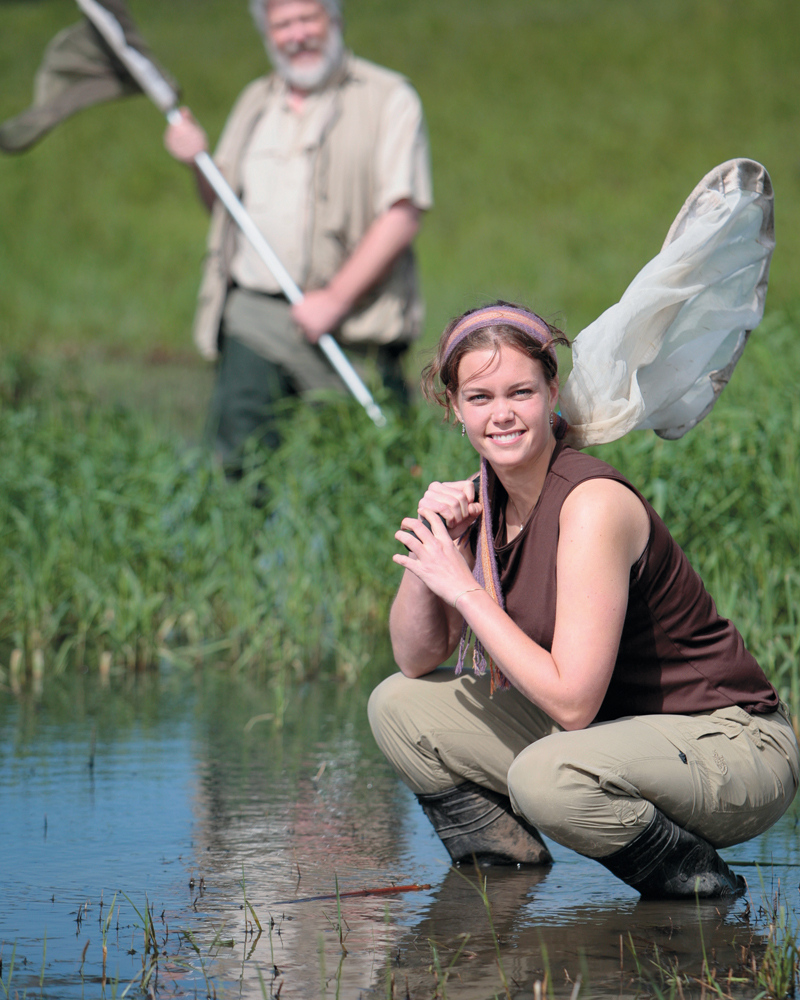
Erin Elizabeth Gorsich
B.S. Biology Dover, Ohio
• Anderson & Howard Hughes Summer Scholar
• Vice President of Intellectual Development, Alpha Chi Omega
• Captain, Tennis
• Homestead Resident
• Senior Fellow, Biology
• Mentor, Honors Program
• Executive Member, Green Team
• Ph.D. Candidate, Environmental Science, Oregon State University
I wanted my specIal Denison photo to reflect things that meant the most to me during my four years there, so I invited my research adviser, Dr. Tom Schultz, to accompany me to the ponds at Infirmary Mound Park, looking as if we were collecting damselflies. One of the aspects of my experience at Denison that I value most—that made me feel most engaged—was the opportunity to interact with other students and faculty. Collecting data was always fun, but the real creativity and engagement in my research came from brain-storming, talking science, and working with my adviser and lab group, especially Dr. Schultz and Laurel Symes ’07, my labmate.
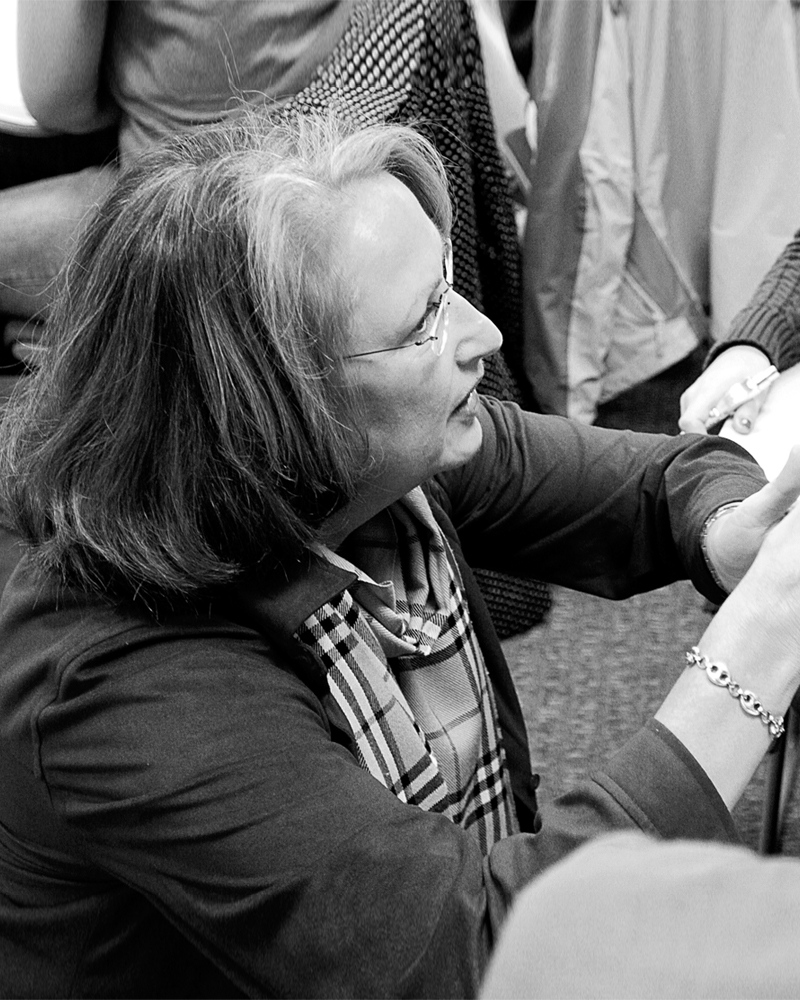
Spanish Mission
Professor of Spanish Susan Paun de Garcia receives the 2008 Brickman Teaching Excellence Award
Susan Paun de Garcia is a study in brilliant contrast. She’s a dedicated professor of Spanish, one who inspires students to value knowledge, and she’s a student herself, learning every day from those she teaches. She has both feet in the 21st century, using every possible form of technology in her teaching, even as her intellectual curiosity lures her back 400 years, to the Spanish Golden Age and the magical words of Miguel Cervantes’ Don Quixote.
This year, Garcia’s master craftsmanship in the teaching profession was recognized when she received the 2008 Brickman Teaching Excellence Award, the highest Denison honor bestowed on faculty. continually for ways to keep her teaching fresh. Back in the 1990s, she collaborated with the Department of Theatre to produce a modern Spanish play every other spring, a teaching technique that enabled her students to memorize their lines, learn to act, and gain a better understanding of Spanish culture.
During that same period, technology became part of the way she taught language and culture. It started with simple things, like the exchange of e-mail with students, and then everything changed with the times. “Today we have them do blogs, wikis, and podcasts instead of journals,” Garcia says, “and PowerPoint is our daily bread. All of these things help with language learning. Denison is a paradise for technology and we have amazing support from our IT people.” It’s a process of leveraging the students’ natural interest in technology, Garcia says. “I want them to be technologically savvy, because I know it’s going to be a part of their lives.”
After two decades, she has, of course, taught many classes more than once—but she has never taught any of them exactly the same way twice. She might use a new teaching technique, theme, or selection of readings to make sure that her students connect with the material. She once taught Honors 173, “Great Books: Don Qui-jote and The Dangers of Living by the Book, ” in a video game format that was a social experiment on having a “second life.”
Through Denison’s Patty Foresman Fund, Garcia invited nine students and two professors from the Superior School of Dramatic Art in Murcia, Spain, for a weeklong visit to Denison last spring for the presentation of the play No hay burlas con el amor, directed by Francisco Garcia Vicente. The positive connection between Denison students and the visiting Spanish students led Garcia to suggest a collaboration between Denison’s Modern Languages and Theatre departments in 2010. They’ll have actor/translator Dakin Matthews consult on the play Spite for Spite, which will be produced in parallel versions of Spanish and English, and a small group of students from Murcia will be invited to explain the cultural concepts to Denison’s Spanish students. It’s interdisciplinary learning with creative opportunities, as well as uphill/downhill interaction.
Performance, both theatrical and vocal, is a lifelong passion for Garcia. She acted and sang at the University of Michigan where she earned B.A., M.A. and Ph.D. degrees with a major in Spanish. Her interest in 17th century Spanish drama is reflected in her role as second vice president of the Association for Hispanic Classical Theater and member of the Cervantes Society of America. She is serving a five-year term on the executive committee of the Modern Language Association Division on Sixteenth- and Seventeenth-Century Spanish Drama. Garcia is the author of Manual de investigacion literaria (2004) and The Comedia in English, Performance and Translation, co-edited with Donald R. Larson (2008). She and her husband, Salvador, who is a professor of Spanish at Ohio State University, spend summers at their house in Spain on the Mediterranean Sea, “recharging their batteries” and treasuring visits with their son Tonio, who lives across the Channel, in London.
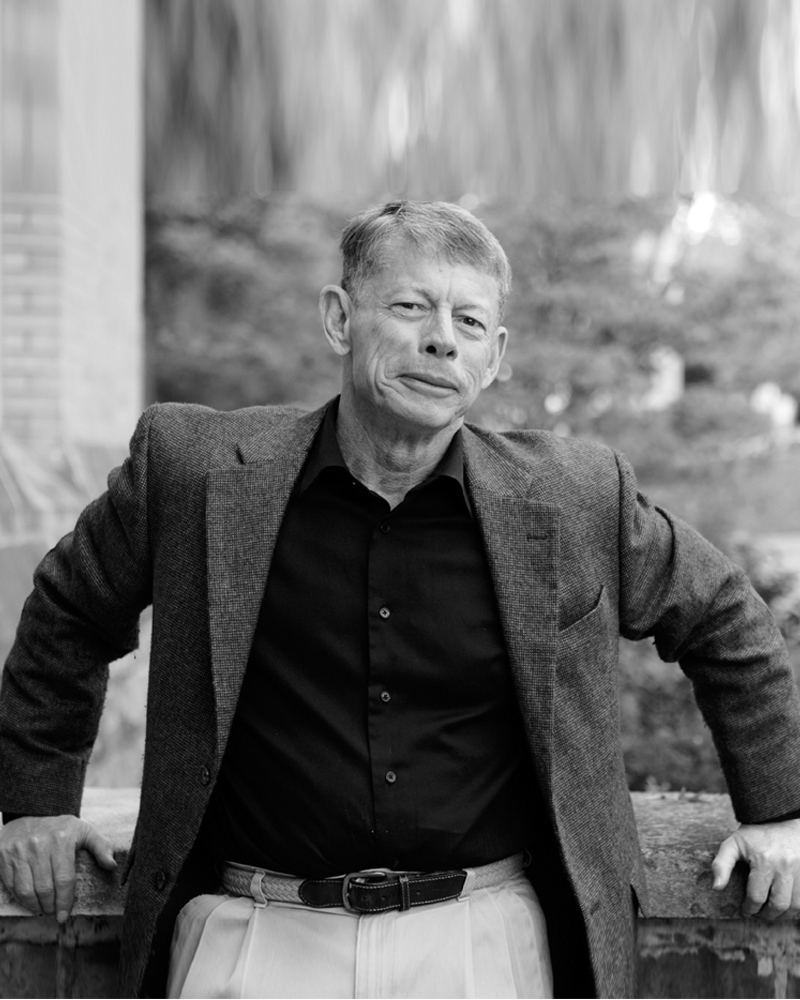
Emmett H. Buell
Professor Emeritus of Political Science, Richard G. Lugar Professor of Public Policy and Director of the Richard G. Lugar Program in Politics and Public Service
Emmett Buell is an “ideas guy,” whether it is developing subjects for books, individual chapters, or creative academic programs that enrich students’ learning and bring prestige to the college. Named director of the Richard G. Lugar Program in Politics and Public Service at its inception in 1995, he was installed as the inaugural holder of the Richard G. Lugar Professor of Public Policy in 2006.
Dr. Buell joined Denison’s political science department in 1969 as an assistant professor, teaching courses in urban politics and American political behavior. Today he is a nationally recognized expert on presidential selection and negative campaigning in presidential elections. He credits the university’s support of his academic research for the opportunity to achieve this recognition. His recent course topics include the Congress, the American presidency, presidential selection and the constitutional design and workings of American governmental institutions. He has taken numerous classes to New Hampshire to learn firsthand the ins and outs of presidential primaries, and was base camp liaison for the June 2007 Mt. Denison Expedition in Alaska. Two months later, Dr. Buell climbed to the 14,225-foot top of Long’s Peak in Colorado.
A native of Longview, Texas, Dr. Buell earned a B.A. (1964) and M.A. (1967) from Louisiana State University, and a Ph.D. from Vanderbilt University (1972). His books include School Desegregation and Defended Neighborhoods: The Boston Controversy (1982); Nominating the President (1991), co-edited with Lee Sigelman; Enduring Controversies in Presidential Nominating Politics (2004), co-edited with William G. Mayer; and the recently published Attack Politics: Negativity in Presidential Campaigns Since 1960 (2008), with Lee Sigelman. He also has written articles and research notes in the American Journal of Political Science, Journal of Politics, American Politics Quarterly, Urban Affairs Quarterly, Social Science Quarterly and the Journal of Law & Politics.
At a farewell reception given for him by former students, Senator Lugar ’54 celebrated Dr. Buell’s distinguished career at Denison, reading a statement that was later inserted in the U.S. Congressional Record. The Senator commended him for the success of the Lugar Program, noting that as of July 2007, 107 students in the program had served as interns in congressional offices. He commented on Dr. Buell’s physical fitness and legendary racquetball competitions with his students. “I know Emmett to be an individual of high integrity and character,” remarked the senator. “He is idealistic, while remaining grounded in the practical. He is serious and thoughtful, while maintaining a sense of humor. He has been an inspirational mentor to hundreds of students.”
Dr. Buell has moved to Prescott, Ariz., to start two book projects, retrace the Santa Fe Trail and begin a much-anticipated new adventure in the Southwest where the sun always shines, the humidity is low and the mountains are waiting to be climbed.

Thomas Ashlie Evans
Professor Emeritus of Chemistry and Wickenden Chair of Chemistry
Tom Evans is a scholar and teacher who delights in helping students understand chemistry, whether they are in college or elementary school. A lifelong Midwesterner, he came to Denison in 1968 as an assistant professor after earning an A.B. in chemistry at Grinnell College (1964) and Ph.D. from Michigan State University (1968).
While at Michigan State, he held a Dow Research Fellowship. He was named associate professor at Denison in 1975, professor in 1980 and Wickenden Professor of Chemistry in 1997, a position he held for 10 years.
During his years at Denison he has taught both introductory and advanced organic chemistry and general chemistry. Through grants from the Denison University Research Fund, COSEN, and the Reid and Polly Anderson Program in the Sciences, he has had the opportunity most summers to collaborate with students doing research.
Dr. Evans has several research interests, including terpenoid chemistry and synthesis of unsymmetrical phenolic porphyrins. An avid researcher, he has spent sabbaticals as a Visiting Professor, Visiting Research Associate, and Visiting Scholar at Northwestern University University of California–San Diego, Ohio State University, and the Argonne National Laboratories as an ACM Fellow.
He has collaborated with numerous students and colleagues on articles in publications such as the Journal of Chemical Education, and presented papers and posters at meetings of the American Chemical Society and the Ohio Academy of Science. His interest in Buckyballs led to a paper titled “Ion Transport and Ferrocene Incorporation in Electroactive Fullerene Films,” which he co-authored with former students Jennifer J. Carlisle ’95 and Charles A. Wijayawardhana ’94 and colleague Paula R. Melaragno. This past summer, Dr. Evans presented a paper with Lauren Parker ’06 at the regional meeting of the American Chemical Society.
As a current Visiting Scholar in the Ohio State University chemistry department, he is researching ammonia borane, a compound that might be essential in moving toward a hydrogen economy in the future. As part of his retirement plans, Dr. Evans hopes to continue his research at Ohio State and to use his science background to help students who are in kindergarten through grade 12 develop a better understanding of chemistry.
After doing a reprise of a January term in Florida he taught 36 years ago, he is now considering writing a book about environmental issues in that area. He will continue playing his trombone with the Heisey Wind Ensemble, an activity he has cherished during his Denison years. He and his wife Laura also will make time to visit sons Eric and John who are lawyers in Palo Alto and Cleveland.

How Denison Makes a College Education More Affordable
This past year, Harvard and Yale and a handful of oTher institutions tried something “new”—they used their endowment income to help reduce costs for incoming students. Newspapers went a little gaga over the notion; opeds and blogs and front pages took note. After all, this was new stuff.
Except that Denison’s been doing exactly this for 15 years.“We have long believed that part of our job is to do what we can to make Denison affordable for the students we admit,” says Perry Robinson, vice president and director of admissions. “We’re pleased that some of the larger universities have decided to come on board—but we’ve been doing this for a long time, and we’re stepping up our efforts.”
Denison is one of the few undergraduate liberal arts colleges to have substantial endowment resources, enabling the college to practice “need-blind” admissions. This means that Denison admits the best-qualified students without knowledge of or regard for their family finances.
The costs of operating a top-tier educational program with a 10 to 1 student-faculty ratio and a residential campus are substantial. But Denison’s endowment provides resources that, when coupled with Annual Fund gifts from alumni and friends, cover 33 percent of the college’s annual operating expenses.
“Denison’s endowment resources are the consequence of generous alumni support compounded by a long-term record of good stewardship,” says President Dale Knobel. “Rather than hoarding the endowment’s income, Denison invests in its student body, substantially reducing costs for the larger number of students. As a result, students and their families carry less financial burden.”
On average, across the student body of about 2,100, Denison invests about $17,000 per student per year. Some receive more, based on their combination of circumstances, and some less, but this year alone, Denison has provided from its own resources a total of $36.9 million in grants and scholarships to its students. Another $2.7 million of university funding is dedicated to providing self-help employment opportunities for any student, above and beyond college work-study funds.
Denison uses only the Expected Family Contribution (EFC) calculated from the Free Application for Federal Student Aid (FAFSA) form to establish eligibility for need-based aid. Denison does not use additional assessments, such as The College Board Profile, for the purpose of reducing a student’s institutional aid, nor does it consider assets such as home equity. The college also encourages parents to submit letters of circumstances that affect their financial status to determine if eligibility can be increased.
On average, Denison currently meets 95 percent of need for the student body as a whole. The college meets 100 percent of need for those who are Pell Grant eligible and/or their parents’ earned income is less than $40,000 or they are the first generation of their family to attend college. Ten percent of Denison student families meet these criteria. Nearly a quarter of Denison students are from families with income of $60,000 or less.
But need is not the only consideration. Denison also is serious about rewarding students with records of academic excellence.
“The practice of awarding merit scholarships makes it possible, in many cases, for exceptional students from middle income families to pursue their preference for a selective liberal arts college over a lower-tuition large state university, which may not be their first choice,” says Nancy Hoover, director of financial aid.
A full 94 percent of current first-year students receive $8,000 or more in need-based financial aid or merit-based academic scholarships funded by Denison. Many students receive both forms of support. In all:
6 percent receive awards of more than
$30,000 per year;
43 percent receive awards of more than
$15,000 per year; and
85 percent receive awards greater than
$11,000 per year.
The bottom line is, by addressing need with grants rather than with debt, and by rewarding academic excellence, the college ensures that only 49 percent of Denison students graduate with any debt at all, and, of those students, the average owed is $14,657.
These numbers place Denison among other highly selective schools committed to accessibility and afford-ability, such as Middlebury, Swarthmore, Bates, Macalester, Haverford, Bowdoin, and Colorado colleges.
In fact, Denison is in the top 20 of all institutions in the nation for lowest level of debt upon graduation. And the average student debt held by a Denison grad is about 26 percent lower than the average student debt held by a graduate of Ohio State University.

